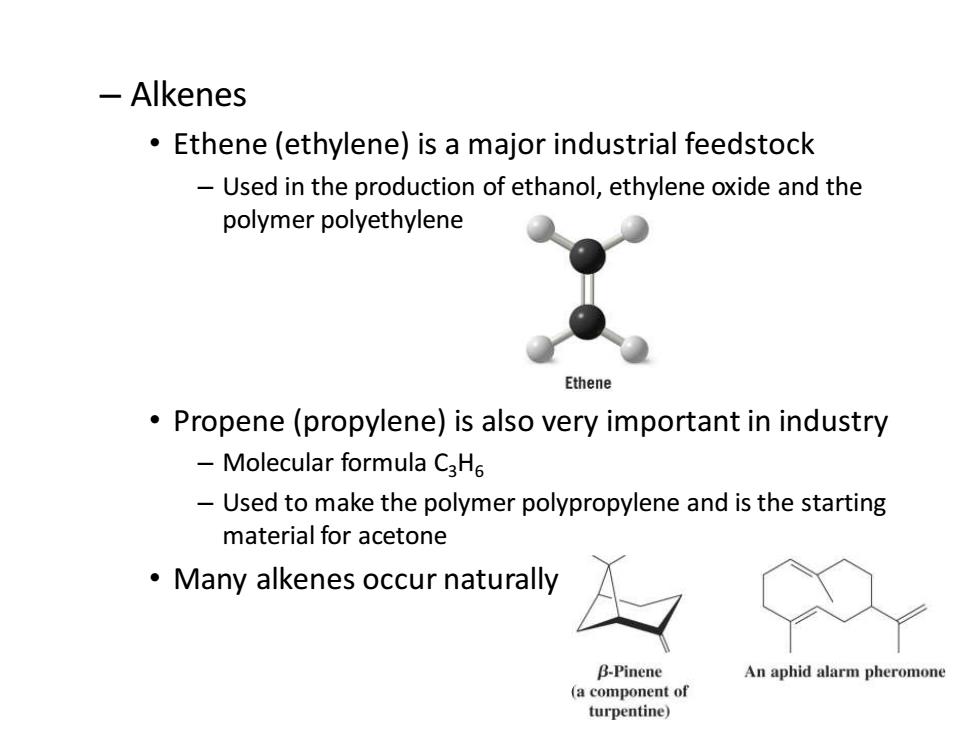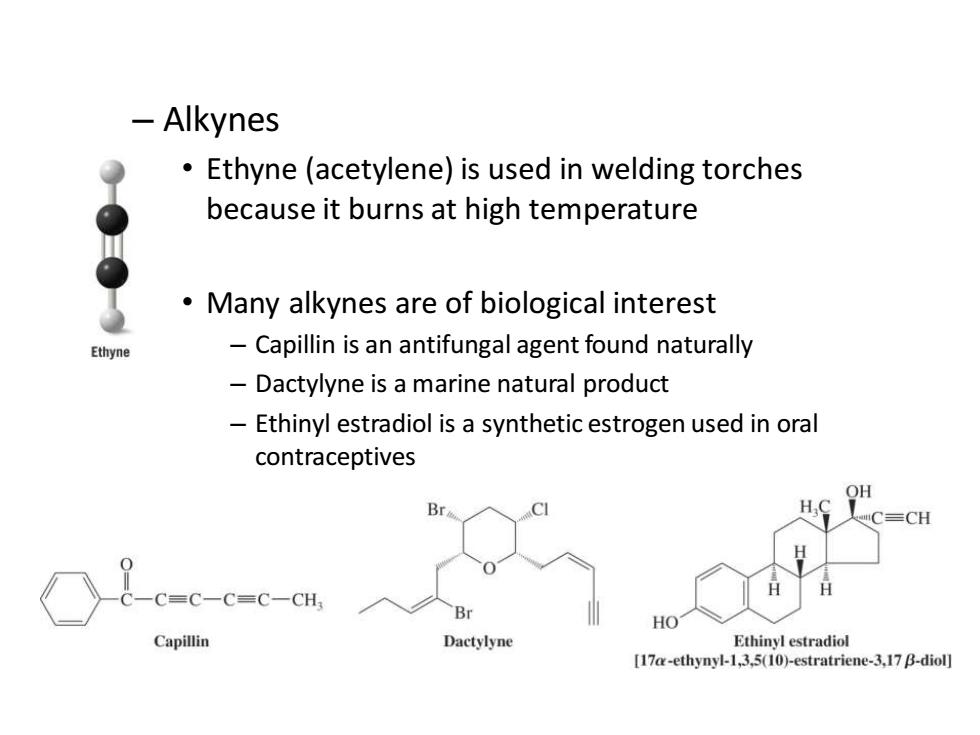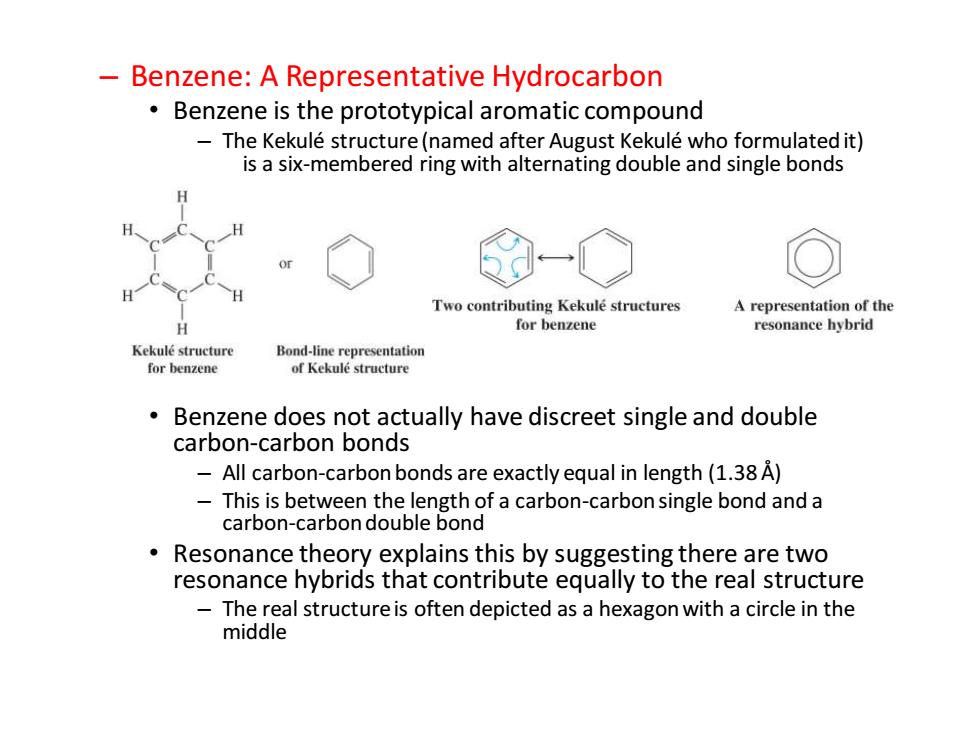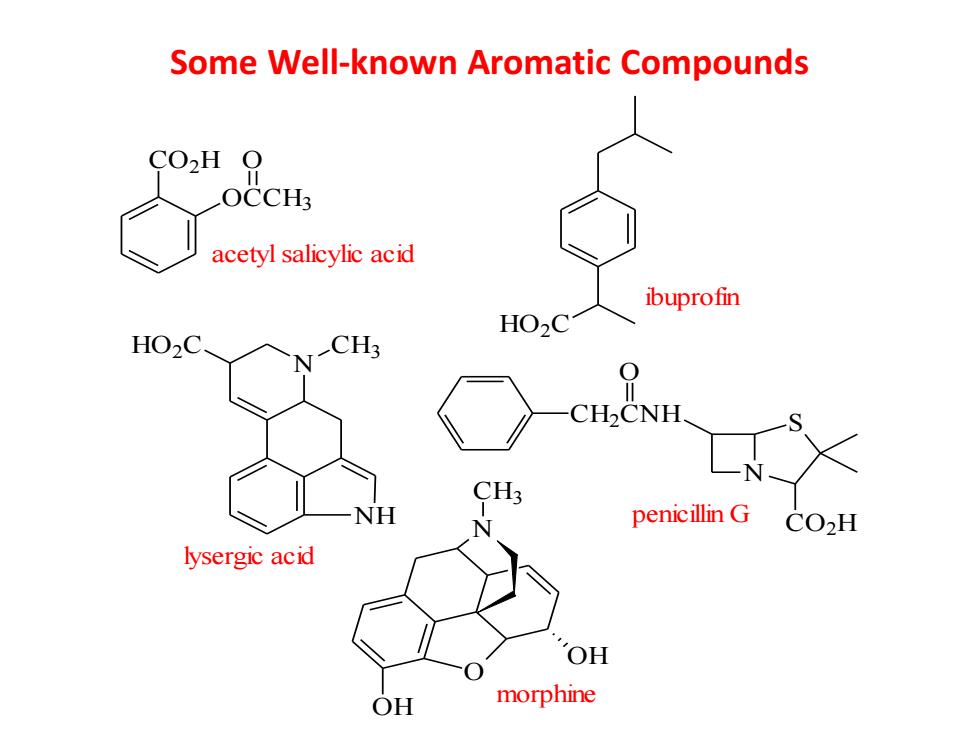
Functional Groups
Functional Groups

-Alkenes Ethene(ethylene)is a major industrial feedstock Used in the production of ethanol,ethylene oxide and the polymer polyethylene Ethene Propene(propylene)is also very important in industry Molecular formula C3H6 Used to make the polymer polypropylene and is the starting material for acetone Many alkenes occur naturally B-Pinene An aphid alarm pheromone (a component of turpentine)
2 – Alkenes • Ethene (ethylene) is a major industrial feedstock – Used in the production of ethanol, ethylene oxide and the polymer polyethylene • Propene (propylene) is also very important in industry – Molecular formula C3H6 – Used to make the polymer polypropylene and is the starting material for acetone • Many alkenes occur naturally

-Alkynes Ethyne(acetylene)is used in welding torches because it burns at high temperature Many alkynes are of biological interest Ethyne Capillin is an antifungal agent found naturally Dactylyne is a marine natural product Ethinyl estradiol is a synthetic estrogen used in oral contraceptives Br CH C=C-C=C-CH; Br HO Capillin Dactylyne Ethinyl estradiol [17a-ethynyl-1,3,5(10)-estratriene-3,17 B-diol]
– Alkynes • Ethyne (acetylene) is used in welding torches because it burns at high temperature • Many alkynes are of biological interest – Capillin is an antifungal agent found naturally – Dactylyne is a marine natural product – Ethinyl estradiol is a synthetic estrogen used in oral contraceptives

Benzene:A Representative Hydrocarbon Benzene is the prototypical aromatic compound The Kekule structure(named after August Kekule who formulated it) is a six-membered ring with alternating double and single bonds Two contributing Kekule structures A representation of the H for benzene resonance hybrid Kekule structure Bond-line representation for benzene of Kekule structure Benzene does not actually have discreet single and double carbon-carbon bonds 一 All carbon-carbon bonds are exactly equal in length(1.38 A) This is between the length of a carbon-carbon single bond and a carbon-carbon double bond Resonance theory explains this by suggesting there are two resonance hybrids that contribute equally to the real structure The real structure is often depicted as a hexagon with a circle in the middle
– Benzene: A Representative Hydrocarbon • Benzene is the prototypical aromatic compound – The Kekulé structure (named after August Kekulé who formulated it) is a six-membered ring with alternating double and single bonds • Benzene does not actually have discreet single and double carbon-carbon bonds – All carbon-carbon bonds are exactly equal in length (1.38 Å) – This is between the length of a carbon-carbon single bond and a carbon-carbon double bond • Resonance theory explains this by suggesting there are two resonance hybrids that contribute equally to the real structure – The real structure is often depicted as a hexagon with a circle in the middle

Some Well-known Aromatic Compounds CO2H O OCCH3 acetyl salicylic acid ibuprofin HO2C HO2C. CH3 CH2CNH CH3 NH penicillin G COH lysergic acid OH OH morphine
Some Well-known Aromatic Compounds CO2H OCCH3 O acetyl salicylic acid HO2C ibuprofin N NH HO2C CH3 lysergic acid N S CO2H CH2CNH O penicillin G O OH OH N CH3 morphine